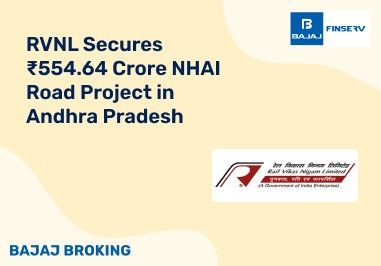BAJAJ BROKING
PDP Shipping & Projects IPO is Open!
Open a Free Demat Account
Trade Now, Pay Later with up to 4x
Track Market Movers Instantly
Exploring Modi’s $1.2 Billion Initiative for New Cities in India’s 100-Day Agenda
Synopsis:
In his proposed 100-day agenda, Indian Prime Minister Narendra Modi plans a transformative $1.2 billion initiative to establish around ten new cities, focusing on enhancing the manufacturing and service sectors and alleviating urban congestion.
Introduction:
With a bold vision to transform India's urban future, Prime Minister Narendra Modi has proposed an ambitious plan within his 100-day agenda that involves the creation of approximately ten new cities. Funded initially by an impressive $1.2 billion, this initiative is aimed at expanding the manufacturing and services sectors and alleviating urban congestion. This move signals a significant pivot towards enhancing India's economic resilience and sustainability while addressing some of the critical challenges posed by urbanisation.
The Essence of Modi’s Urban Expansion Plan:
Strategic Placement and Development Goals
The new cities, as envisioned, are not just about expanding urban real estate; they are strategically planned to enhance India's industrial and services capacities. These cities will likely be placed in locations that maximise logistical advantages, accessibility to major transport routes, and availability of resources. The aim is to create hubs that are conducive to business, equipped with modern infrastructure, and capable of attracting both domestic and international investments.
Economic Implications
The direct economic benefits of such an initiative are manifold. By creating new urban centres, the government hopes to stimulate job creation, enhance skill development, and reduce the burden on India’s already overpopulated metropolitan areas. This decentralisation of industrial and service activities is expected to spur growth in underdeveloped regions, fostering more equitable economic development across the country.
Socio-Economic Challenges and Opportunities
While the economic intentions behind these new cities are clear, the social implications are vast and complex. Integrating these new cities into the national fabric involves planning for housing, education, healthcare, and social services that match or exceed current standards. Ensuring that these cities are inclusive and equipped to provide for diverse populations is crucial.
Additional Read: Share Market News
Technological and Environmental Considerations
In an era where sustainability cannot be overlooked, these new cities present an opportunity to employ the latest in green technologies and urban planning innovations. Modi’s plan likely includes smart city features like IoT integration, energy-efficient buildings, and sustainable waste management systems, setting new standards for environmental responsibility in urban development.
Political and Administrative Challenges
Building new cities from scratch involves navigating complex political and bureaucratic landscapes. Issues such as land acquisition, state versus central government jurisdiction, and local resistance can pose significant hurdles. Moreover, the ambitious timeline of 100 days to initiate such a comprehensive plan adds to the challenge, requiring unprecedented levels of coordination and efficiency from all levels of government.
A Forward-Looking Conclusion
Prime Minister Modi’s plan to build new cities reflects a forward-thinking approach to solve some of India’s most pressing issues—urban congestion and economic disparity. If executed effectively, these new cities could serve as beacons of balanced development and modern urban planning. However, the success of such a massive undertaking will heavily rely on meticulous planning, robust investment, and unwavering political will. It is a monumental task, but one that could redefine India’s urban and economic landscape in the decades to come.
This initiative is not just about constructing cities; it's about envisioning a future that embraces growth, innovation, and sustainability in equal measure. As India stands on the brink of this potential urban revolution, the global community watches with keen interest, aware that the outcome could resonate well beyond India's borders, influencing urban development strategies worldwide.
Disclaimer: Investments in the securities market are subject to market risk, read all related documents carefully before investing.
This content is for educational purposes only. Securities quoted are exemplary and not recommendatory.
For All Disclaimers Click Here: https://bit.ly/3Tcsfuc
Share this article:
Read More Blogs
Our Secure Trading Platforms
Level up your stock market experience: Download the Bajaj Broking App for effortless investing and trading











